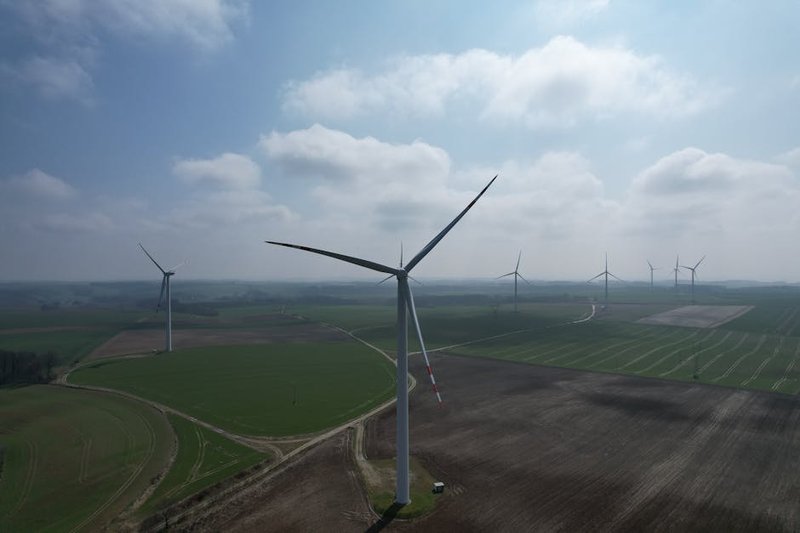The technology landscape across construction and manufacturing sectors is undergoing significant transformation as we move through 2025, with projections indicating substantial shifts through 2030. As companies navigate economic uncertainties, technological applications are becoming increasingly vital for maintaining competitive advantages while managing rising costs and labor challenges.
Construction – Current Market Conditions and Technology Response
Recent data from the Building Cost Information Service (BCIS) indicates that building costs are projected to increase by 17% over the next five years, while tender prices will rise by approximately 15% during the same period. These economic pressures are driving industries to seek technological solutions that can offset rising expenses while improving efficiency.
Dr. David Crosthwaite, Chief Economist at BCIS, notes that “sentiment in construction has changed significantly since the start of the year,” with economic growth stagnating and inflation beginning to rise again. This economic environment is creating challenging conditions that technology must address.

The implementation of automated systems and digital workflows has become essential rather than optional as labor costs continue to climb. The BCIS Labour Cost Index is forecast to increase by 18% up to Q1 2030, driven partly by increases to employers’ National Insurance contributions and the National Living Wage. These factors contributed to a significant monthly increase of 2.5% in April compared to March of this year.
Construction – Technology Applications Addressing Labor Constraints
With the continued tightening of the supply side and long-term loss of employment in the construction labor force, technology solutions are being deployed to address several key challenges:
1. Digital Twin Technology – Construction
Digital twin implementations are gaining traction across construction projects, allowing for comprehensive virtual modeling before physical construction begins. This technology enables teams to:
- Identify potential design conflicts before they become costly on-site problems
- Optimize resource allocation and scheduling
- Reduce material waste through precise quantity calculations
- Facilitate collaboration between geographically dispersed teams
Adoption rates of digital twin technology increased by 27% in Q1 2025 compared to the previous year, indicating growing recognition of its value in addressing cost pressures.
2. Autonomous Equipment and Robotics – Construction
Labor shortages have accelerated the adoption of autonomous construction equipment and robotics. These technologies are particularly valuable in repetitive tasks such as:
- Excavation and grading
- Bricklaying and concrete pouring
- Interior finishing work
- Site monitoring and security
Market analysis indicates that the construction robotics sector is experiencing an annual growth rate of 23%, with particular acceleration in markets facing the most severe labor constraints.
3. Prefabrication and Modular Construction
Technology-enabled prefabrication has evolved significantly, with advanced manufacturing facilities now capable of producing building components with exceptional precision. This approach offers several advantages:
- Reduction in on-site labor requirements by up to 40%
- Improved quality control in controlled factory environments
- Accelerated project timelines
- Decreased material waste
Industry data suggests that projects utilizing modular construction methods are completing 30-50% faster than traditional approaches, making them increasingly attractive as labor costs rise.
Materials Technology and Supply Chain Innovation
Materials cost inflation has been moderating since peaking in 2022, with annual growth in the BCIS Materials Cost Index moving into negative territory from Q3 2023 to Q2 2024. However, BCIS expects the index to grow by 15% over the forecast period, driving interest in materials innovation.
Several key technology trends are emerging in response:
1. Advanced Materials Development
Research into new construction materials is yielding promising results, including:
- Self-healing concrete that can repair minor cracks without human intervention
- Ultra-high-performance composites that reduce material requirements while maintaining structural integrity
- Transparent wood and other sustainable alternatives to traditional building materials
- Graphene-enhanced products with superior strength-to-weight ratios
These innovations are particularly significant as traditional materials face volatile pricing due to global supply chain pressures.
2. Supply Chain Visibility Technologies
Blockchain and IoT-enabled supply chain tracking systems are gaining adoption as companies seek to:
- Verify the provenance and quality of materials
- Anticipate supply disruptions before they impact project timelines
- Optimize inventory levels to minimize carrying costs
- Ensure compliance with increasingly stringent environmental regulations
Industry leaders implementing these technologies report a 22% improvement in supply chain resilience and a 17% reduction in materials wastage.

3. 3D Printing Applications
While still developing, large-scale 3D printing technology is showing promise for specific construction applications:
- Custom architectural elements that would be cost-prohibitive using traditional methods
- Emergency and affordable housing solutions
- Complex geometric structures that optimize material usage
- On-site production of components to reduce transportation requirements
Early adopters have reported material cost savings of up to 30% on suitable projects, though the technology remains limited in its broader application.
Artificial Intelligence and Predictive Analytics
AI-driven solutions are transforming planning, estimating, and project management across construction and manufacturing:
1. Predictive Project Analytics
AI systems analyzing historical project data are enabling more accurate:
- Cost estimations that account for likely variations and contingencies
- Schedule predictions that incorporate realistic timelines
- Resource allocation optimized for specific project conditions
- Risk assessments that identify potential problems before they emerge
Projects utilizing these technologies report a 34% reduction in cost overruns and a 28% improvement in schedule adherence.
2. Design Optimization
Generative design tools powered by machine learning are revolutionizing the conceptual design phase by:
- Automatically generating multiple design options based on specified parameters
- Evaluating designs for structural integrity, energy efficiency, and cost considerations
- Suggesting material alternatives that may offer better performance or value
- Optimizing for specific objectives such as sustainability or accessibility
These tools are reducing design time by up to 40% while improving building performance metrics across multiple categories.
3. Maintenance and Operations
The technology impact extends beyond construction into building operations:
- Predictive maintenance systems that identify potential equipment failures before they occur
- Energy management systems that continuously optimize building performance
- Space utilization analytics that help organizations make data-driven decisions about their facilities
- Security systems with advanced threat detection and response capabilities
The integration of these technologies is creating buildings that are not only less expensive to construct but also significantly more economical to operate over their lifecycle.
Economic Outlook and Technology Investment
Dr. Crosthwaite notes that “subdued growth in new work output” is expected through 2025, with more robust growth evident over the remaining years of the forecast period. This economic reality is influencing technology investment decisions across the industry.
Companies appear to be focusing technology investments in three primary areas:
1. Efficiency-Enhancing Technologies
Solutions that directly improve productivity or reduce labor requirements are receiving priority funding:
- Mobile workforce management platforms
- Reality capture technologies that create accurate as-built documentation
- Workflow automation systems that eliminate manual processes
- Equipment optimization systems that maximize utilization and uptime
These investments typically show the fastest return and are therefore attractive in uncertain economic conditions.
2. Risk Mitigation Solutions
Technologies that reduce project uncertainty are gaining traction:
- Advanced project simulation tools
- Weather prediction systems integrated with scheduling software
- Compliance automation that ensures regulatory requirements are met
- Quality control technologies that identify defects early in the construction process
As projects become increasingly complex, these risk management tools are becoming essential components of successful delivery.
3. Client Experience Technologies
Solutions that enhance the client experience throughout the project lifecycle:
- Immersive visualization tools that help clients understand designs
- Real-time project dashboards that provide transparency into progress
- Digital handover systems that streamline the transition to operations
- Post-occupancy analytics that demonstrate building performance
These technologies are particularly valuable for firms seeking to differentiate themselves in competitive markets.
Future Trajectory and Strategic Considerations
Looking toward 2030, the construction and manufacturing industries will likely see technology adoption accelerate as solutions mature and economic pressures continue. Organizations should consider several strategic factors when planning their technology roadmaps:
- Integration capabilities between different technological systems
- Scalability to accommodate projects of varying sizes and complexities
- Training requirements to ensure workforce adoption
- Data security considerations, particularly for sensitive project information
- Total cost of ownership beyond initial implementation
As Dr. Crosthwaite observes, much of the growth will be fueled by a recovery in housing output, which “is expected to grow significantly during the period, although from a relatively low base.” Technology solutions that address the specific challenges of residential construction may therefore see particularly strong demand.
The state of public finances puts much public spending at risk, potentially impacting infrastructure output unless alternative funding sources can be identified. This constraint may drive interest in public-private partnership models enabled by technology platforms that facilitate complex stakeholder collaboration.
For forward-thinking organizations, today’s challenging economic environment represents an opportunity to gain competitive advantage through strategic technology deployment, positioning themselves for accelerated growth as market conditions improve through the latter half of the decade.



